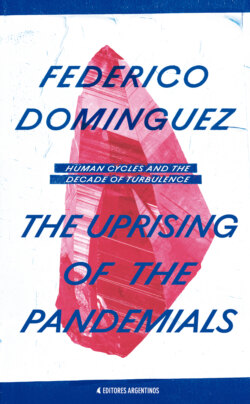Читать книгу The Uprising of the Pandemials - Federico Dominguez - Страница 10
На сайте Литреса книга снята с продажи.
THE CYCLE OF INEQUALITY
ОглавлениеIn his book “Supermarket USA: Food and Power in the Cold War Farms Race,” Shane Hamilton explains how American propagandists viewed supermarkets as ideological weapons during the Cold War. The image of the American family strolling down the aisles of well-stocked shelves of food products at affordable prices, loading their groceries in the car, and living in a nice house with a yard in the suburbs traveled around the world. It was a clear display of the advantages of American capitalism and liberal democracy. Only capitalism could offer this standard of living to its entire population, as opposed to the authoritarianism and the chronic scarcity of communist countries. This image was the basis of the anti-communist propaganda throughout the 40 years of the Cold War. (3)
The end of World War II and the dawn of the Cold War gave way to a worldwide battle between two paradigms. Capitalism was no longer the only option. A competitor emerged born out of Russia and it began to spread through eastern Europe, China, North Korea, Vietnam, and Cuba. And so, a bipolar world was born, in which each side needed to prove to its citizens and humankind that its model was superior. The solution found by Western governments was to accelerate the process of expansion of public education and healthcare, in addition to other social programs launched after the crisis of 1930. In Europe, this was represented by the welfare state that emerged in the post-war era. In the United States, this solution was represented by Lyndon B. Johnson and his “War on Poverty” and concept of a “Great Society.” The goal was a happy public to keep Soviet totalitarianism far from their citizens.
